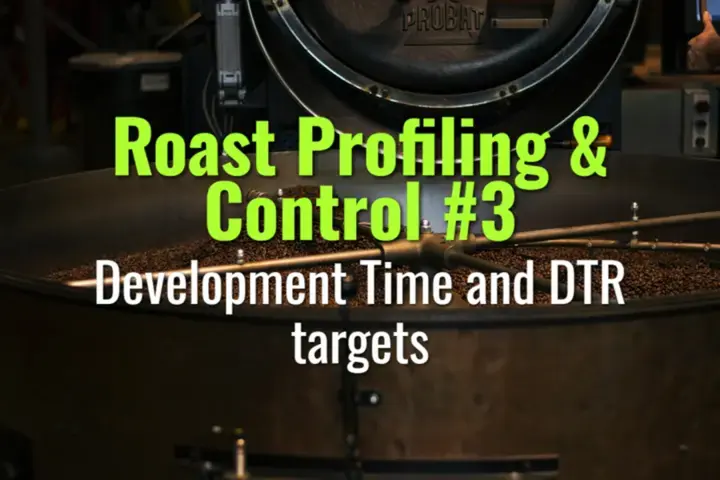Development Time and DTR targets
This topic explains how to manage the development phase of roasting, including how to target the optimal Development Time Ratio (DTR) for flavor and roast consistency.
- Coffee Basics Nerds
- 1 min read

Key Concepts
-
Development Time (DT):
-
The period from first crack to the end of roast.
-
Critical for final flavor, acidity, body, and sweetness.
-
Over- or under-development affects balance and cup quality.
-
Development Time Ratio (DTR):
-
Calculated as the percentage of total roast time spent in the development phase.
-
Typical targets: 18–22% for light roasts, 20–25% for medium, 22–28% for darker roasts.
-
Adjusting DTR influences Maillard reactions, caramelization, and perceived sweetness.
-
Monitoring DT and DTR:
-
Track bean temperature from first crack to drop.
-
Adjust gas and airflow to maintain desired RoR during development.
-
Avoid sudden spikes or RoR crashes to preserve DTR targets.
-
Impact on Cup Profile:
-
Longer DTR: increased body, reduced acidity, more caramelization.
-
Shorter DTR: brighter acidity, lighter body, potential underdevelopment.
-
Practical Tips:
-
Use roast software to log DT and calculate DTR in real time.
-
Calibrate DTR targets by bean origin, density, and desired roast level.
-
Combine with cupping feedback to fine-tune future roasts.
Summary
Managing development time and DTR is essential for consistent cup quality. By controlling the duration and RoR during the development phase, roasters can achieve predictable flavor profiles and maintain balance across batches.
You might also like:
- Tags:
- Key Concepts
- Cup Quality
- Practical Tips
- Acidity Body
- Light Roasts
- Fine Tune
- Bean Temperature
- Flavor Profiles
- Lighter Body
- Darker Roasts
- Maillard Reactions
- Cup Profile
- Roast Level
- Body Sweetness
- Cupping Feedback
- Gas Airflow
- Perceived Sweetness
- Desired Roast
- Flavor Acidity
- Essential Consistent
- Consistent Cup
- Impact Cup
- Brighter Acidity